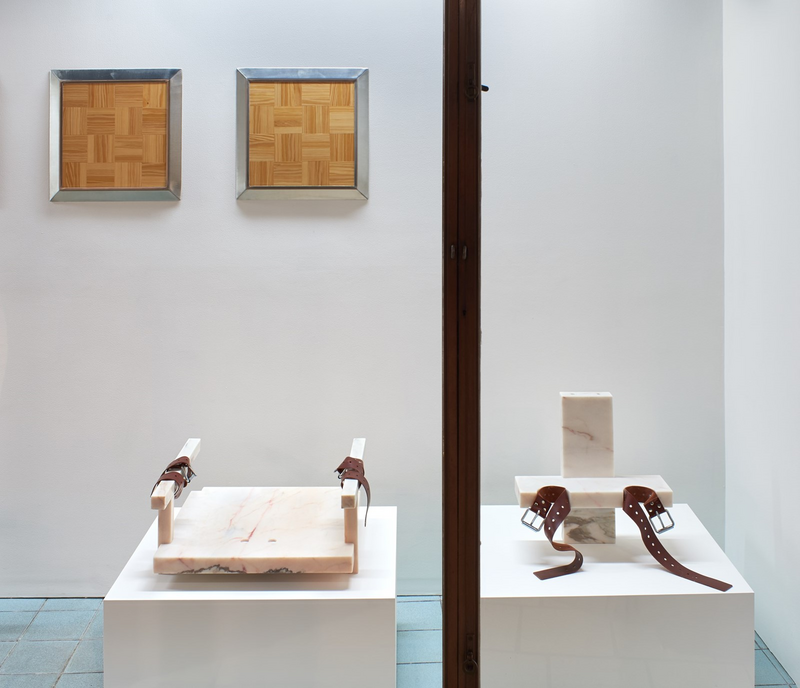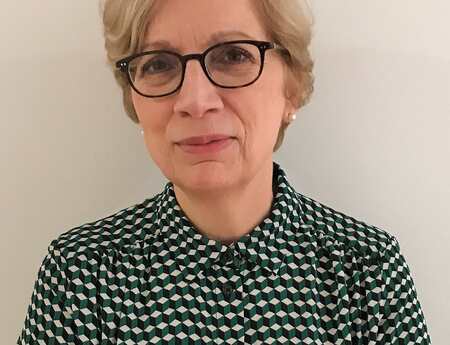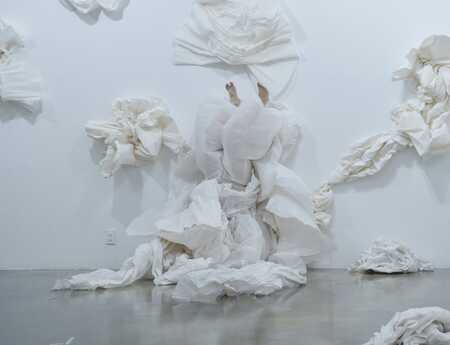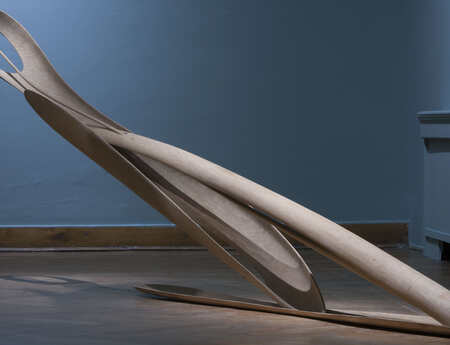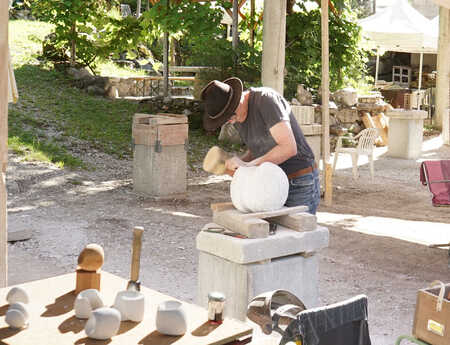Sculpting Things: Design and Contemporary Sculpture
In a world shaped by algorithms and mass design, New York-based artist Nikita Seleznev talks about making things that defy definition—mixing sculpture, utility, and absurdity to imagine new futures from familiar forms.
I am drawn to art with utopian potential—work that dares to imagine radically different futures. Growing up and studying in Russia, I have long been inspired by Soviet Constructivism, which sought to radically reshape human consciousness by transforming the material world. The Constructivists rejected passive, gallery-bound art; instead, they saw art as an active, functional force woven into everyday life—from urban infrastructure to domestic environments.
Today, as a cross-disciplinary artist and sculptor, I observe a similar transformative impulse evolving through experimental approaches to materials, forms, and modes of production. These approaches result in objects at the intersection of contemporary art, design, and craft—and defy easy categorization. Such projects rarely offer mere functional solutions—nor are they meant to. Instead, they prompt us to rethink how we organize personal space, relate to everyday objects, and understand how historical narratives shape these relationships in contemporary society.
There is often a kind of beautiful absurdity to such objects—suddenly, something that still resembles (and perhaps even functions as) a chair becomes an entity of dense structural and conceptual complexity. Swedish artist Anna Uddenberg exemplifies this tension, blending design aesthetics with sculptural and performative representations of the female body. Her futuristic chairs and stools act as sculpture pedestals or performance props—extending to prosthetic-like attachments to the performer’s body—while also standing alone as autonomous pieces.
Uddenberg’s work challenges how we engage with the human form in an age of late-stage capitalism, technological acceleration, and the visual logic of social media.
In an interview given to Artnet in 2024, she reflected on this dynamic:
“I’m curious how people are using social media platforms, and how we’re influenced, or even conditioned, by algorithms today. How is this shaping our sense of selves, and how, ultimately, are we willfully turning into products? The notion of what’s ‘natural’ or ‘authentic’ has been copied so many times, it’s completely detached from any reference that could be thought of as an original. Maybe we’re all just wild mutants at this point.”
Social media and digital image culture have played a pivotal role in Uddenberg’s artistic trajectory. Her rise in the 2010s coincided with the emergence of platforms like Offluxo and Tendermass, where her work—at once visually seductive and conceptually layered—captured the attention of audiences and curators alike. Her objects operate in a dual register: intellectually rigorous and instantly compelling within the scroll-driven aesthetics of online platforms. By infiltrating these information feeds and using them as a stage to expose the absurdity and violence embedded in the relentless pursuit of being “fitter, happier, and more productive,” she lays bare the contradictions and emotional strain of contemporary society.
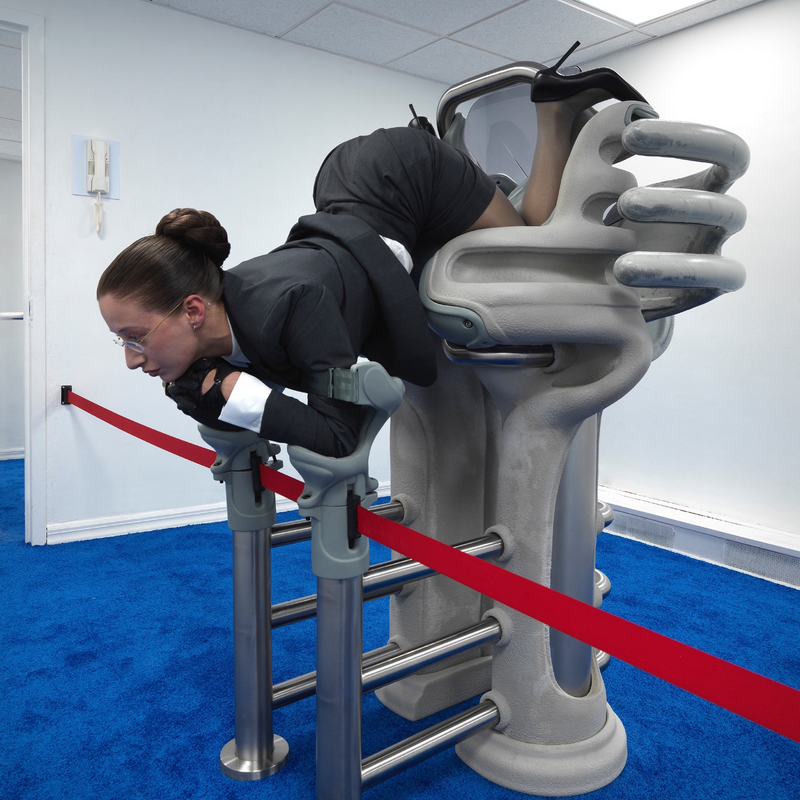
Her 2023 project Continental Breakfast, arguably her most viral to date, presents objects that appear functional and ergonomic at first glance, yet reveal a hyper-functionality that makes them unusable by human bodies. Instead of offering comfort, they expose the performer to discomfort and vulnerability, creating a sharp contrast between seductive design and unsettling embodiment.
This tension—between function and concept, material and metaphor—also questions artistic identity. When a chair is also a sculpture, should its maker be considered an artist, a designer, an artisan, or a builder? And if the object resists categorization, can its creator do the same?
In a conversation with Bryony Stone, American artist Dozie Kanu, now based in Portugal, speaks directly to this ambiguity:
“I’m all about making functional objects, but the functional layer of my work is merely just a layer. I don’t care much about what my label is at this point. I’m going to continue making objects that are an authentic representation of who I am and the things that I’ve been thinking about.”
Kanu’s sculptural works often begin with furniture forms and expand into complex metaphoric terrains. His pieces blur the line between utilitarian object and conceptual sculpture, embedding historical references and socio-political critique. One of his most compelling works is a series of electric chairs carved in marble—objects that evoke execution devices but are rendered as memorials. These works enter into the discourse of Achille Mbembe’s necropolitics, exposing how state power, violence, and death are embedded in material forms.
Dozie Kanu often infuses his perspective with memories of growing up as a Black boy in Texas. For example, the purple in his work references “Lean” — a mixture of prescription cough syrup containing codeine or promethazine, soda, and fruity candy. This drink originated in Houston as early as the 1960s and became cult in hip hop culture, particularly in the Southern United States.
In 2018, riding the wave of his success, Dozie Kanu escaped the hard-driving American art scene and moved to a small city in Portugal, where he established his practice in a house-studio. To be honest, nothing pleased me more, I have always loved a good, successful escape story.
A practice like Uddenberg’s and Kanu’s—merging art and functional objects—requires a cross-disciplinary approach on a conceptual level, as well as when it comes to production. Anne Uddenberg, for instance, collaborates with specialists in custom design, welding, and fabrication. Dozie Kanu, in turn, blends workshop-produced elements, customized objects, and readymades in radically fluid ways. These complex processes always involve fabricators and technical teams. To me such an act of collective making feels natural and invigorating.
My artistic approach is to a large extent shaped by collaboration—bringing together people with diverse creative skill sets from across art, construction, architecture, design, and technology. Many of my works—including the recent video for Norma—were created in collaboration with architect and musician Grigory Baluev and involved digital animation. The same project includes sculptures produced using 3D printing technologies. Though trained as a sculptor, I see outsourced production in large installations and objects as integral to my artistic process. I often envision a kind of 21st-century guild—a collective of makers where humans and machines work side by side, merging craftsmanship and innovation into a new model of collaborative creation.
Some of Kanu’s and Uddenberg’s pieces also incorporate found objects, often simple functional household items, like car rims (Kanu’s Chair [iii], 2018), outdoor gas heaters (used in the objects for Uddenberg’s Continental Breakfast, 2023), or suitcases (in Uddenberg’s Savage #4 (quilt queen), 2017), and Kanu’s collaboration with RIMOWA in 2018.
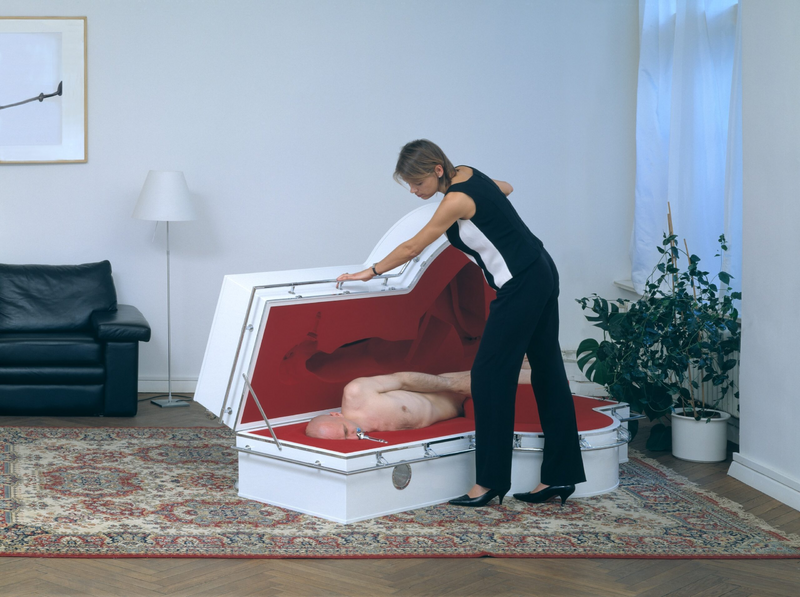
However the Lithuania-born, Berlin-based sculptor MK Kaehne, in my opinion, reinterprets the readymade in a particularly compelling way. His structures retain a clear link to 20th-century conceptual art, ready-mades, and Fluxus—from which his work emerges. Kaehne draws, constructs, and assembles suitcase sculptures—his Koffer —in the visual language of department store displays to explore social and autobiographical themes, as well as a critique of consumer culture. His suitcases carry an unsettling atmosphere, at times resembling sarcophagi, and highlight the uncanny within everyday objects as they cross into other symbolic domains. Though initially captivating with familiar modernist aesthetic, their enigmatic compartments, surreal bodies, and unsettling precision open up an open-ended field of interpretation.
Transforming mass-produced objects into handcrafted works might appear decorative at first. After all, unlike artworks that are supposed to be non-functional by definition, industrial design is rooted in accessibility, efficiency, and mass utility. From my perspective, there is no need for such dichotomy; instead, I find it more compelling to use familiar forms as a starting point—to reshape them into playful, unpredictable compositions. I think the most interesting work happens at the edges—between disciplines, traditions, or media. These in-between spaces hold genuine potential precisely because there is no fixed playbook for how things should be done. When you cross into those territories, you are free to propose something entirely new—and those on the other side are often open to it. They might not grasp your framework, but that ambiguity makes room for experimentation. That is what makes the margins so compelling to me.
In the established systems, where trends are blueprinted and expectations are crafted, innovation feels harder to come by. But at the fringes—amid uncertainty—strange collisions, beautiful accidents, and unexpected discoveries occur. I love the idea of someone funding a project knowing it could fail, of backing the possibility of error. That, I believe, is where something truly utopian begins.
Recorded and edited by Ekaterina (Katya) Savchenko.
Nikita Seleznev is an artist based in New York, USA
Ekaterina (Katya) Savchenko is a curator and art writer based in Lisbon, Portugal
This article was written in English and translated into German by Elka Parveva Kern.
References
Anne Uddenberg Quote
Lauter, Devorah. "Anna Uddenberg’s Body-Twisting Sculptures Probe—and Breach—the Limits of Femininity and Reality." Artnet News, January 2, 2024.
https://news.artnet.com/art-world/anna-uddenberg-up-next-2414762
Bryony Stone Quote on Dozie Kanu and Dozie Kanu's Conversation
Stone, Bryony. "The Young Artist Working at the Intersection of Industrial Design and Art." AnOther Magazine, October 5, 2018.
https://www.anothermag.com/art-photography/11234/the-young-artist-working-at-the-intersection-of-industrial-design-and-art
Anemone Vostell on MK Kaehne
Vostell, Anemone. “Eine retroaktive Künstlermonographie im DCV-Verlag.” August 15, 2024. https://anemone-vostell.com/2024/08/15/mk-kaehne-p-314159/
